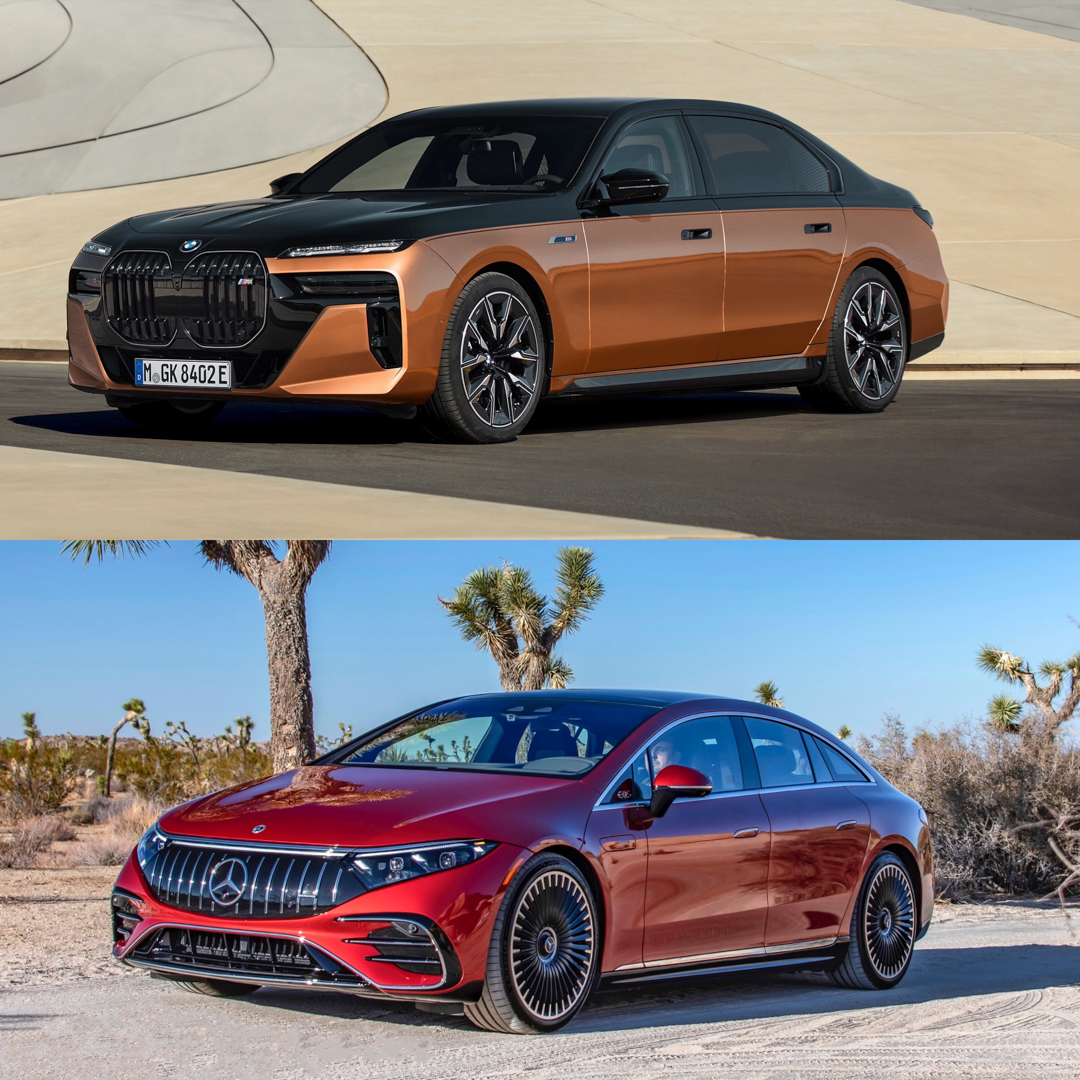The BMW i7 has a ton of tough competition. With other cars like the Mercedes-AMG EQS, Lucid Air, and Tesla Model S, the luxury electric sedan segment is a tough one. However, there really is only one car the i7 needs to beat and that’s the Mercedes. BMW and Mercedes have been at each other’s throats for almost a century and that isn’t going to stop just because their cars switched from gas to electric. Now, though, range is the ultimate difference maker, so which car can go the furthest on a single charge, the BMW i7 or the Mercedes-AMG EQS.
Both cars have massive batteries, 101.7 kWh for the BMW i7 and 107.8 kWh for the AMG EQS. Both cars have claimed ranges of over 350 miles on the WLTP cycle. So Mat Watson and Carwow decided to test both cars out and drive them as far as they could go on a single battery charge, to see which went further. They didn’t hypermile the cars and just drove them normally on highways to see how they’d handle normal everyday driving. Watson did ruin his EQS’s efficiency a bit by showing off its immense acceleration, which is genuinely impressive, but otherwise they behaved in their cars.
The Mercedes-AMG EQS 53 in this test also had the very expensive performance pack added, so it is admittedly far more powerful than the BMW i7. Its dual electric motors make a whopping 751 horsepower and 752 lb-ft of torque, which absolutely shame the i7 xDrive60’s 536 horsepower and 539 lb-ft. That makes the AMG far, far quicker, with a claimed 0-60 mph time about a second quicker than the i7’s. That additional power can absolutely sap some of its range, but not every AMG EQS customer needs to get the performance pack. Without it, its power drops to about 650 horsepower.
However, range is more important than power for most customers. The BMW i7 is still seriously quick and far quicker than any customer will ever need. So can it out-perform the AMG in terms of outright range? In this test, Mat Watson, while behind the wheel of the i7, achieved just a hair over 301 miles of range, which is really quite good for such a big, heavy car that isn’t built on a bespoke electric platform and has the aerodynamics of a brick. But was that good enough to beat the tear drop-shaped AMG EQS, which is far more aerodynamic and sports a slightly bigger battery?





































































